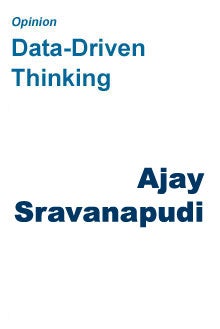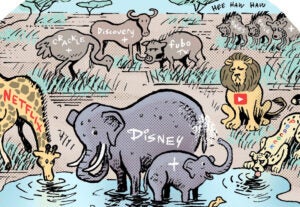 “Data-Driven Thinking” is a column written by members of the media community and containing fresh ideas on the digital revolution in media.
“Data-Driven Thinking” is a column written by members of the media community and containing fresh ideas on the digital revolution in media.
Today’s column is written by Ajay Sravanapudi, CEO at LucidMedia.
Nearly every online marketer is concerned with transparency and brand safety. These seem to be the biggest roadblocks to brands embracing display. A quick search on AdExchanger reveals a dozen articles on both subjects in the last few months. We’ve all talked about it yet there still seems to be more misconceptions than fact surrounding what is possible when it comes to real brand safety.
In April of 2010 Winterberry Group LLC reported that “transparency and brand safety have conspired to inhibit billions in potential online display ad spending.” Brand safety continues to undermine a broad investment in display advertising by brand advertisers despite the obvious efficiencies being delivered by today’s ad networks. This is because truly preemptive brand safety is difficult so most have settled for simple post impression verification and are therefore not getting a truly brand safe environment for their message. But the DSP trend changes all that.
With the advent of contextual display advertising, a host of new advertising opportunities opened up for marketers across every industry. Whether contextualization is done at the site level (i.e. ESPN.com is about sports) or at the page level (i.e. automotive content on CNN.com), the ability to target ads around content—in addition to demographic and behavioral profiles—is pretty powerful stuff. But with these big opportunities comes an equal amount of risk. Imagine an automotive ad next to a news story about a horrific car crash or an ad for a vacation package next to tsunami news coverage of the same destination. We see it in contextual search as well as display. It’s enough to make any brand marketer anxious about any sort of online advertising.
The good news is that advances in targeting technologies and demand-side platforms (DSP) with real-time bidding (RTB) are creating truly brand safe environments for brand advertiser. But like transparency, everyone defines brand safety differently. There is one feature that separates effective brand safety from all the other forms of impression analysis and delivery verification out there today. It‘s preemptive brand safety. Is your trusted flavor of brand safety truly preemptive? Or is the brand safety you rely on from your DSP really just post impression analysis disguised as safe filtering? This is another great myth in our industry often perpetuated on purpose only because preemptive is difficult to pull off.
Real brand safety, meaning a demonstrably safe environment for brand advertisers to promote their message online, comes from sanitizing the ad space before the ad is served. Of course pre-impression analysis for relevance, performance and safety is very difficult to do so it’s the least prevalent form out there. Evaluating billions of impressions a day for relevance takes a robust platform and deep integration with all of the real-time bid aggregation points. But it pays huge dividends in both safety and efficiency by guaranteeing quality impressions and eliminating the need for pass-backs. With truly preemptive brand safety you only buy what is safe with no waste in the equation.
But when pages are not categorized for meaning in advance, ads get served next to inappropriate content and the advertiser simply gets a report indicating that it has happened again. That isn’t preemptive brand safety, that’s reactive reporting. It’s the equivalent of closing the gate after the cows get out (and wander down the middle of the highway disrupting traffic and endangering your brand investment).
Everyone knew it would take third-party providers to deliver real brand safety. Back in March, Jonathan Margulies at Winterberry Group acknowledged as much right here on AdExchanger. It isn’t in the publisher’s best interest to exclude their own content from advertising—for a publisher the more bidders the better. The interest in such technology falls on the demand side but most advertisers lack the engineering infrastructure to build such a solution. In the display advertising landscape, providing preemptive brand safety is the responsibility of the demand-side platforms. Various platforms provide this ability in varying degrees – from zero to truly preemptive. Ask the question. Make sure you are getting the truly preemptive kind that boosts efficiency and return on spend.
Follow LucidMedia @lucidmediaVIP and AdExchanger.com (@adexchanger.com) on Twitter.











